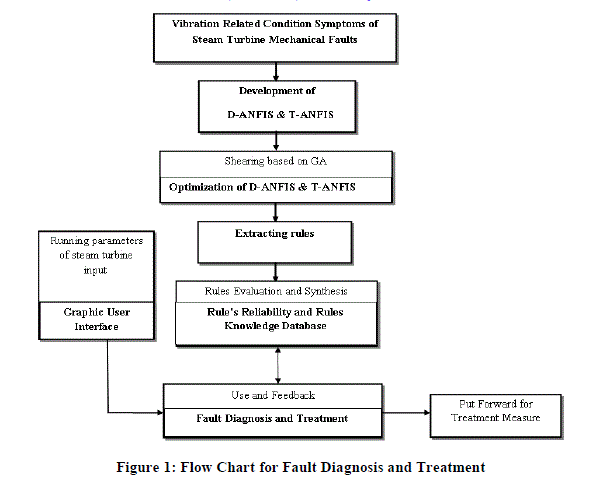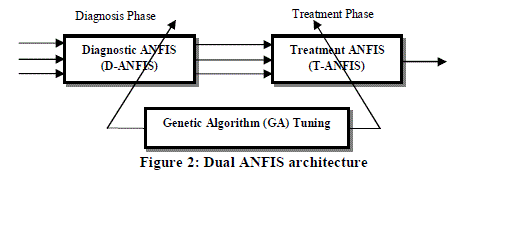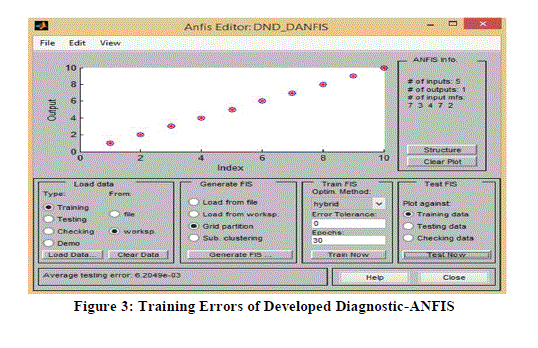ISSN ONLINE(2319-8753)PRINT(2347-6710)
ISSN ONLINE(2319-8753)PRINT(2347-6710)
Monali Bhakare 1, A. R. Rajan 2
|
| Related article at Pubmed, Scholar Google |
Visit for more related articles at International Journal of Innovative Research in Science, Engineering and Technology
Keywords |
| Ground anchors, earth pressures, axial capacity, tiedowns, seismic design, design of ground anchor |
INTRODUCTION |
| A rock anchor is a long, high capacity reinforcement comprising a bar (or tube) fixed into rock and tensioned to a predetermined load. Rock anchors are used widely to improve the stability and load bearing characteristics of a rock mass. Cable rock anchors utilise bundles of steel wires or fibre glass rods to form a fixed anchorage at depth. The inherent flexibility of cable rock anchors allows long unjointed bolts to be installed where there are cramped working conditions or where access is difficult. Rock anchors were first introduced in mining starting in the 1890s. Rock anchors are always installed in a pattern, the design of which depends on the rock quality designation and the type of excavation. Rock anchors work by knitting the rock mass together sufficiently before it can move enough to loosen and fail by unraveling (piece by piece). |
 |
| Our system aims at the automatic detection of text. This is done by the algorithm. Fig. 1 shows the flow diagram of text detection algorithm. The algorithm steps are summarized as follows. Rock anchors are formed from high yield or mild steels rather than the high tensile prestressing grades of steel that are commonly used for ground anchorages; the latter are more susceptible to stress corrosion and hydrogen embrittlement. Rock anchors in new permanent structures are designed for a service life of 120 years but in structural maintenance applications - corrosion protection should take account of the aggressivity of the ground and groundwater, the required service life and the consequences of failure |
| In Pune, due to growing need for space which is at its peak but the land being limited, it arises a problem of space for car parking which is a mandatory requirement today put forth by the Municipal authority. So to make full and proper use of the given limited space, we need to go below ground level and create basements to accommodate the ever growing number of cars in the city. To get a dry and functional basement we need to resist underground water pressure in basement area. In this region hard basalt rock is found approximately at a depth of 3 to 4 meter below ground level, so by taking advantage of this hard rock, rock bolts/ rock anchors will be functionally feasible to resist underground water pressure in basements. The column loads of building can be directly transferred to hard basalt rock through individual column footings and it is not necessary to provide raft foundation for transferring column load to natural foundation. However, we need to consider the uplift water pressure that may be developing on the basement structure provided for accommodating cars. To resist this uplift water pressure on basement, a new concept of providing rock anchors is introduced. The basement structure will have isolated column footings which will be transferring the load to foundation and slab anchored to the parent rock by means of rock bolt to take care of underground water pressure. As one of the most widely used application, it is proposed to study design application of rock anchors for the project Sadhu Vaswani Education complex at PCNTDA, Boradewadi, Pune. |
| As per the project design, the architectural drawings proposed two basement levels for car parking. The proposed basements are 8 to 9 meter below ground level. Therefore to resist this 8 to 9 meter head of water we are proposing use of post-tensioned rock anchors. As per the proposal by M/s Vascon Engineers Limited, column’s loads are taken by isolated footings and the underground water pressure is resisted by the raft and the rock anchors. As we are getting rock present below as foundation strata, safe bearing capacity for the same is approximately 1500 KN/m2 and size of the footings are in the range of 2 to 3 meter and column grades are 10.5 meter by 10.5 meter i.e. centre to centre spacing. Thus, proposal of isolated footing to transfer the loads is advisable. |
| To resist water pressure of 8 to 9 meter head, approximately 3 to 4 meter depth of dead load considering concrete density as 25 KN/m3 is attained which is very high as rock present as strata is very difficult to excavate and going 3 to 4 meter further down in such a compact rock is very uneconomical and time consuming process. So by providing rock anchors depth can be reduced substantially and further excavation is avoided. Now it is to be decided which type of rock anchor would be better suited for the given conditions. As passive rock anchor (or rock bolt) are of low capacity and viable for 2 to 3 meter of water head only, whereas in our case water head will be of 8 to 9 meter approximately. Thus, we will have to go for active rock anchors. Proposal of rock anchors is even more suited by anchoring the cables in the rock below and with the proposed raft at lower basement level. So we are proposing post tensioned cables connected with rock mass below and lower basement raft above and we will be designing the same further. |
TEXT INPAINTING |
| 1. SITE DETAILS |
| Location – “Proposed Building for Sadhu Vaswani Education complex at PCNTDA, Boradewadi, Pune. |
| During sub-surface investigation it sometimes happens that boreholes do not show presence of water at a point but during excavation water is found to be present at the same place. |
| To avoid such a condition, introduction of Rock Anchors furthers its cause to neutralize the upward water pressure due to seasonal variations as well as topography of the city. |
| Area |
| Two basement levels are proposed by M/s Vascon Engineers to facilitate parking for its commercial tower as a mandatory requirement today put forth by the Municipal authority having a requirement of large amount space for parking. |
| In this region hard basalt rock is found approximately at a depth of 3 to 4 meter below ground level, so by taking advantage of this hard rock, rock bolts/ rock anchors will be functionally feasible to resist underground water pressure in basements. |
| The basement structure will have isolated column footings which will be transferring the load to foundation and slab anchored to the parent rock by means of rock bolt to take care of underground water pressure. |
| A sleeve/sheath is placed while concreting for making raft so as to facilitate drilling of boreholes upto 10 metres in the parent rock for insertion of tendons without affecting the raft later. |
| Water was found in the excavation pit for elevator, continuously water was pumped out and plump concreting of the area was carried out. |
| DRILLING OF BOREHOLES |
| 1. Drilling is carried out by means of pneumatically operated rigs at the locations demarcated through the sleeves provided in the RCC raft as shown in fig. 2. |
| 2. The Length and diameter of the borehole are specified in the approved drawings i.e. 10m and 150mm respectively. |
| 3. Fixed length is calculated and was obtained to be 7 meter, free length is taken between 3 to 4 meter and thus we take it to be 3 meter. Therefore, we take total length as 10 meter. |
| The Borehole is flushed properly with water and air before withdrawal of DTH bit. |
 |
| 3. FABRICATION & INSTALLATION OF TENDONS |
| The Pre stressing strands of 15.24mm diameter are cut into lengths including free length (4.43m), bonded length (5.57m) and allowance for stressing length as per the design. |
| Free Length of the prestressing strand is covered annularly with the PVC flexible transparent ¾”hose pipe. The pipe shall be properly sealed at the bottom with OPP tape. |
| The Bond length of the prestressing strands remains uncovered. The strands shall be untwisted for the specified unsplit length. |
| The required number of strands are grouped with centralizers spaced @ 1.5m c/c throughout the length of the tendon. |
| For grouting, 3/4” semi rigid primary hose pipe is tied along the length of the tendons and ensure it protrudes out of the hole after installation of Tendons. |
| The tendons are lowered into the boreholes immediately after drilling. |
| GROUTING |
| Grout is mixed according to the Design Mix. |
| Cement - 50kgs (53 Grade) |
| Water - 22ltrs. |
| CeraExpan250 - 225gm (N.S.additive) |
| Water cement ratio – 0.42 |
| The water is put into the container first and then the non-shrink additive is added. Then the cement is slowly added and mixed thoroughly with water as shown in fig.3. |
| Grout is mixed for at least two minutes until a colloidal consistency is produced. |
| The grout is pumped inside the borehole through the primary hose provided upto the bottom of the hole. The grout is filled from the bottom of the hole replacing the water entrapped inside the hole. |
| The grout is allowed to overflow until the same consistency of grout overflows from the borehole. |
| Six numbers of grout cubes are casted and the same can be tested for checking the strength achieved by the grout. |
 |
| 5. STRESSING |
| Bearing Plate of 20mm thickness is placed at the top of RCC raft. On the top of the bearing plate Single barrels along with wedges prior to stressing. |
| The prestressing force is not applied to a member until it has attained the specified strength at transfer. |
| Only personnel trained and experienced in this type of work perform the stressing operations. Special care is taken to apply the tensioning force smoothly and evenly. |
| Stressing is carried out by single pull jack in two stages in order to appreciate the load in adjacent strand unit. |
| Under no circumstances, the maximum jacking force exceeds the rated capacity of the jacking equipment being used, or 80% of the specified minimum ultimate strength of the tendon whichever is the lesser. |
| Proper care is taken during stressing to ensure the safety of all personal engaged in the work. |
| The operation of jacks, the measurements of elongation and associated operations are carried out in such a manner and from such positions that the safety of all is ensured. |
| Extra strand length provided for stressing is cut off after completion of stressing. |
| EQUIPMENT DETAILS |
| Stressing Unit |
| Stressing Pump |
| Stressing Jacks |
| Grout Pump |
| Discharge:- 25 liters/Minute. |
| Working Pressure: 5Kg/cm2 |
| Electric Supply: A.C 440, 3Phase |
| Weight: 200Kg. |
| Area of Piston: 19.64cm2 |
| Stroke of Piston: 75mm |
| Details of Prestressing Wire |
| Type of strand 7 wire Super |
| Nominal Diameter 15.24mm |
| Nominal steel Area 141mm2 |
| Ultimate Tensile Strength 260.7KN |
| Modulus of Elasticity 195 KN/mm2 |
| Strand Drawing at Anchorage 6mm |
| Relaxation Low |
| Details of Stressing Jack |
| Type Double Acting |
| Ram Area 48.5cm |
| Stroke Length 200mm |
| Jack Capacity 30T |
| Weight 25Kg |
CONCLUSION |
| Prestressed concrete is basically concrete in which internal stresses of a suitable magnitude and distribution are introduced so that the stresses resulting from external loads are counteracted to a desired degree. Post –Tensioning system enquires concrete which has high compressive strength and post tensioned reinforcement called “ HT strands” HT strands shall confirm to ASTM 416 specification or equivalent. Its ultimate tensile strength of 7 wire twisted strands should be 260 kN. Strands of 15.2 mm diameter with low relaxation having nominal area and Modulus of Elasticity 140 mm2 and 195 KN/ mm2. Anchorage device maintain the applied force in the tendon and transfer it to surrounding concrete |
References |
|